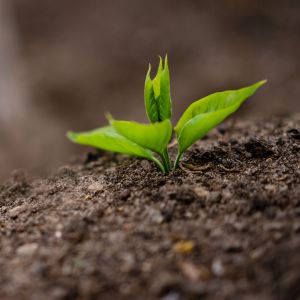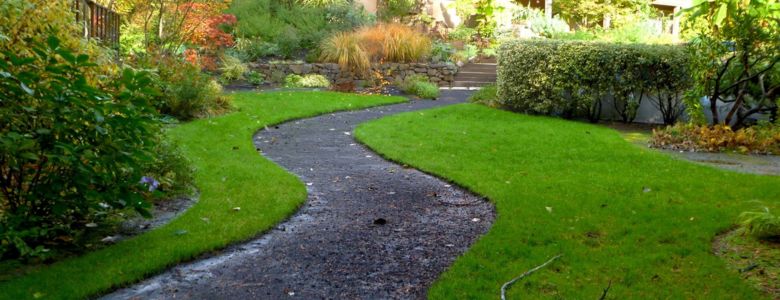Achieving a vibrant, thriving lawn isn’t just a matter of patience; it’s about knowing the right time and method to give your grass seedlings the boost they need to establish strong roots. Let’s embark on this journey and delve into the art of applying starter fertilizer.
Timing Matters for Early Fertilization
When you’re sowing seeds or laying sod, timing plays a crucial role. The goal is to provide essential nutrients to your young plants. The best strategy is to apply starter fertilizer just before or after planting. However, the timing depends on your grass type and the season.
Cool-Season Grasses
If you’re cultivating cool-season grasses like Kentucky bluegrass or tall fescue, the ideal window is late summer or early fall when the weather is cool but not freezing. September or October are prime months for seeding or sodding. Right before planting, enrich the soil with starter fertilizer.

Warm-Season Grasses
Conversely, for warm-season grasses like bermudagrass and zoysia grass, opt for late spring to early summer (May to June). Again, make sure to apply starter fertilizer to the soil immediately before seeding or sodding for optimal results.
Mastering the Art of Initial Fertilizer Application
Achieving a lush, green lawn involves more than just timing; it’s about choosing the right fertilizer and following the correct steps. Here’s your guide:
Soil Testing
Start by conducting a soil test to pinpoint nutrient deficiencies accurately. Understanding the nitrogen, phosphorus, and potassium levels lacking in your soil will guide your fertilizer choice. Keep in mind that getting soil test results may take a few weeks, so plan accordingly.
Fertilizer Selection
Examine the fertilizer label carefully to grasp its nutrient composition. Your goal is to choose a fertilizer with higher nitrogen and phosphorus content, as these nutrients promote root growth and a vibrant lawn. Potassium levels should be lower, as new lawns don’t require much of it. Look for formulations like 10-10-10 or 12-8-8 for an ideal start.

Soil Preparation
Dedicate time to properly prepare your soil. It should be soft, loose, and easy to work with. This creates an inviting environment for young roots to penetrate and access essential nutrients. Don’t rush this step; it’s well worth the effort. Remove debris, break up soil, and consider adding compost or manure for a resilient surface, crucial for seed growth.
Fertilizer Application
Prepare your fertilizer tools based on the type you’ve chosen. Liquid fertilizers require a pump sprayer or hose-end sprayer, while granular ones call for a spreader or drop spreader. Apply the fertilizer evenly across the prepared soil, ensuring it’s well-distributed, and don’t forget to water. This helps with nutrient absorption.
Sowing or Laying
Now it’s time to sow seeds or lay sod. As you witness your lawn taking shape, continue watering and maintaining it while waiting for germination, which can take up to 30 days. For seed applications, you can choose to apply seed fertilizer right after planting or beforehand – just remember to water carefully. In general, liquid fertilizer is preferred over granular options. Avoid using herbicides for at least four weeks post-sodding or until the third mow.

Understanding the Role of Starter Fertilizer
Starter fertilizer serves as a quick nutrient boost for your young plant’s root system, providing essential nutrients they can’t access yet. Consider these three key components:
Nitrogen (N): Promotes vibrant green foliage.
Phosphorus (P): Essential for robust root development; aim for a fertilizer with at least 20% phosphorus.
Potassium (K): Less critical for early growth, so starter fertilizers contain only small amounts; it aids mature plants in resisting disease and environmental stressors.
Additional Considerations
Before applying starter fertilizer, consider these factors:
Existing Bare Spots: If your lawn has bare spots from the previous season, apply starter fertilizer and sow grass seed to rejuvenate new seedlings.
Compost vs. Chemical Fertilizer: If your soil lacks organic matter and nutrients, opt for compost or another organic fertilizer. It not only provides necessary nitrogen and phosphorus but also enhances soil aeration, oxygenation of roots, moisture retention, and continuous nutrient supply.
When to Skip Starter Fertilizer
While starter fertilizers are generally beneficial, there are situations where it’s best to refrain:
Extreme Temperatures or Drought: Avoid using them during harsh weather conditions.
Areas with High Runoff: Starter fertilizer can wash away in such areas.
Nutrient-Rich Soil: In soils already rich in nutrients or organic matter, starter fertilizer may not be necessary.
Starter fertilizers offer young plants the vital nutrients they need to establish strong roots swiftly. However, remember that timing and dosage are key. Avoid overusing fast-release nitrogen, aiming for no more than 1 pound per 1,000 square feet on your new lawn.
If you prefer a hassle-free approach or require expert guidance, consider seeking professional assistance from a local lawn care expert. They can evaluate your soil and recommend the right fertilizer for both new and established lawns, ensuring your journey to a lush, green lawn is a success.

